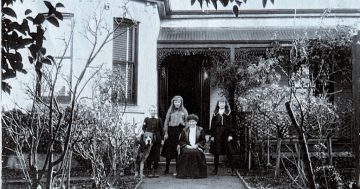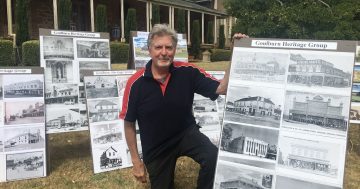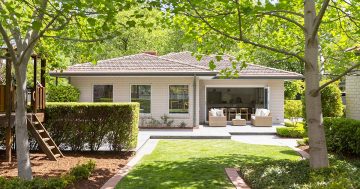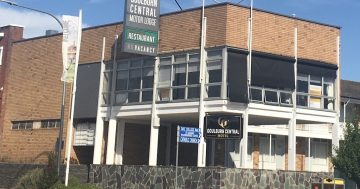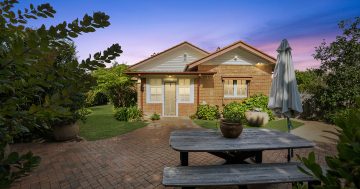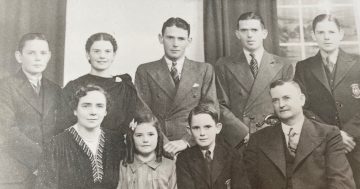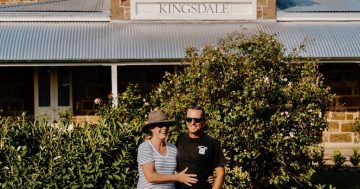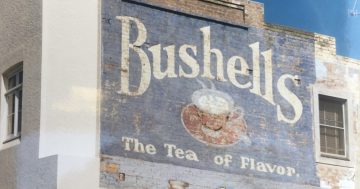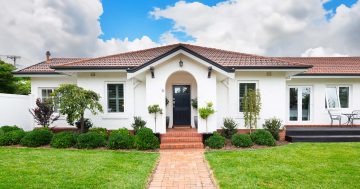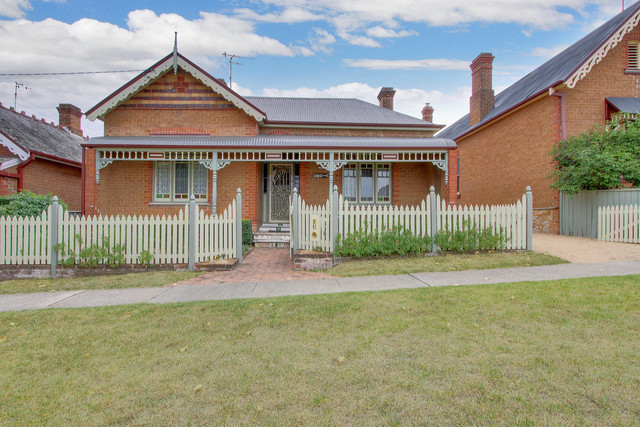
107 Verner Street, which sold under the hammer on Saturday. Photo: Elders Real Estate.
“Where do I start and where do we go?” yelled the auctioneer. “You tell me for an opening bid offer.”
Our century-old home was auctioned on Saturday, amidst a feast of heritage real estate that has come on to the Goulburn property market. Our little place is a minnow among the magnificence on offer.
Down the hill, a four-bedroom home at 20 Church Street overlooking St Saviours Cathedral was auctioned as well with hopes of more than $700,000, but didn’t sell under the hammer. On Friday, another jewell came onto the market, 215 Faithfull Street, an 1885, four-bedroom, two bathroom home on enough land for a little farm. Also on the market for $630,000 is 88 Clifford Street, an 1890 two-story home transformed from eyesore into two-storeys of elegance.
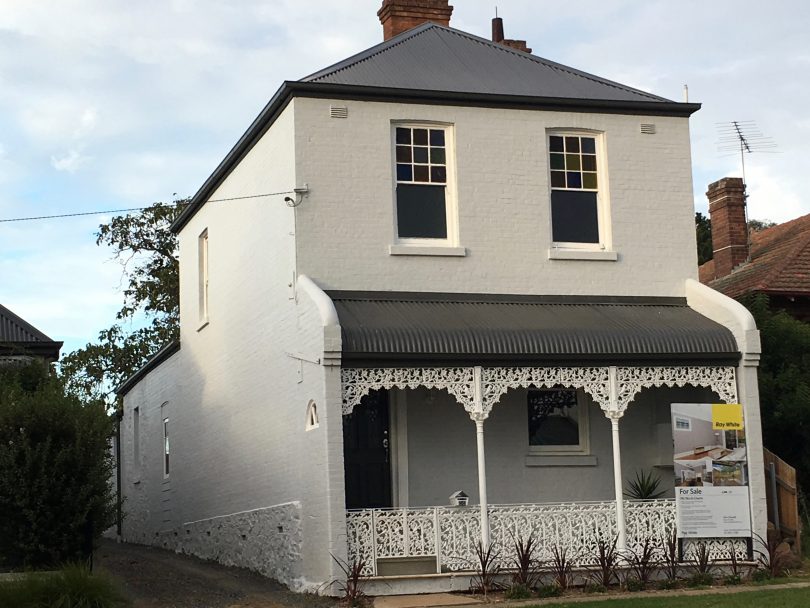
88 Clifford Street, for sale for $630,000. Photo: John Thistleton.
Thirty-six years ago when my wife and I were first homebuyers in Goulburn, my boss suggested buying an old sandstock brick home in the heritage precinct. “They’re solid, handy to town and a good way of getting into the housing market,” he said.
We were in our 20s, wanting something shiny and new. So I turned my nose up at the old homes. Most young people in Goulburn did at the time. Iron-roofed, lime mortar spilling from the brick joints, cracked and patched walls, none of them were inspiring. Their stained-glass windows reminded me of church.
We built a three-bedroom, brick-veneer- and-tile home and sold it when we moved to Young in 1985. In the cherry capital for 18 months, we would push our daughter Rebecca in the pram past an old, granite stone cottage under a steeply-pitched iron roof with timber-framed windows which reminded us of Goulburn.
Unsurprisingly on our return to Goulburn, we followed the boss’s advice, bought an old sandstock brick home in Cowper Street and loved it. We stayed 15 years in the old place, re-grouting bathroom tiles, patching cracks around an old window frame in the dining room and raised Rebecca, Elyse and Luke. I was reminded of this address when I saw Hurstville, the 1860s mansion, come on to the market last week. We lived opposite Hurstville when fibre-clad flats had been tacked on, hiding its grandeur. Inconsiderate tenants forced their nearest neighbours to sell and leave repeatedly.
Still, we loved the neighbourhood. Hurst and Cowper Streets liquidambars and elms that carpeted the footpaths in fiery colours in autumn.
Now restored to its former glory, Hurstville’s price tag is about $2 million.
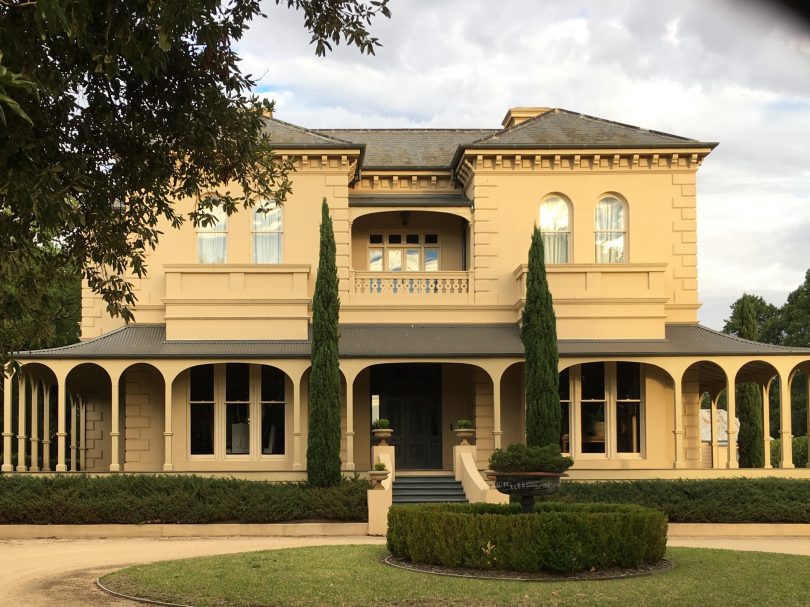
Hurstville, which should fetch about $2 million. Photo: John Thistleton.
Through the 1990s, heritage buildings and the E.C. Manfred-designed homes in particular gently returned to favour, although many well-entrenched locals looked on them with disdain. They still do.
We left town for 12 years, worked in Canberra and on some weekends sped past Goulburn on our way to Sydney. Occasionally we would come through our old home town, down the main drag, and ache inside seeing shops more neglected than when we left.
I was a property writer in Canberra, often interviewing architects who all had a deep regard for central Goulburn’s historic buildings. So one day, returning from Sydney to Canberra, we came through Goulburn, turned up Goldsmith Street, idled along Cowper Street and up Bradley Street, sighing, longing for steep pitched corrugated-iron roofs, sandstock bricks and tall timber windows under bullnose verandahs..
Preparing for retirement, we bought a 1908 double-brick home in Verner Street and have enjoyed repairing the odd crack, painting the picket fence and admiring the patterned, pressed metal ceilings. Five contracts of sale were issued to potential buyers on Saturday so we grew confident it would sell. And it wasn’t long before the opening bid was followed by a volley of others from around a small crowd.
On the way to this point, I recounted one morning waiting for paint to be mixed at Magnet Mart. I had struck up a conversation with the man mixing the paint, who pointed to the double-storey Victorian terrace next door, saying it ought to be demolished so the shop could expand. I was staggered a person working in a hardware shop that probably owes much of its turnover to restoration and maintenance of heritage property would hold such a view.
Re-purposing this lovely old building would give the hardware shop a distinct point of difference over bog-standard Bunnings and complement a string of other historic places along Sloane Street.
All great cities (and towns) are founded on their heritage. Look at Paris Left Bank, Georgetown Washington, The Rocks in Sydney or Melbourne’s Hoddle Grid. Yes, yes it’s a stretch to be comparing inner Goulburn with these precincts, but we do have a Hoddle grid that surveyor Robert Hoddle set out in 1833 before going to Melbourne.
We have been happy to walk down that grid to buy a newspaper, a cup of coffee or to watch the movies, but all these little treats vanished as our agent Ray Croker from Elders and auctioneer David Medina nudged the closing bids along, the auctioneer’s voice becoming urgent and louder. Then a lull, a brief conversation and final bid, a blink for a beautiful old home still facing the street, holding its history.












